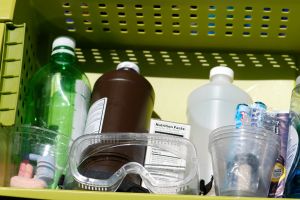Summer is a fantastic time for kids to learn about water through books and hands-on activities.
Water is essential for life, yet we tend to take it for granted because it is generally so readily available. Over the next few weeks, we will use children’s books to explore the water in different ways, including why it is important, the water cycle, and water in our homes.
Today’s post will help children become aware of how important water is to living things and all the ways that it is used.
Our lesson was inspired by Why Living Things Need Water (Acorn: Why Living Things Need) by Daniel Nunn, an informational picture book for the youngest set illustrated with bright color photographs.
Activity 1. Brainstorm how humans use water, creating an age-appropriate list. Either make a collage out of photographs from magazines showing the ideas or have the children create their own illustrations.
Preschool examples: Drinking, bathing, cleaning up
Grade school examples:
Water is used for…
- Drinking
- Bathing
- Washing/cleaning
- Cooling off
- Heating (some homes)
- Cooking
- Growing food
- Swimming
- Painting and creating art
- Boating and skiing on (recreational activities)
- Getting rid of wastes
- Making electricity
- Transportation of goods
- Putting out fires
- Making products like paper and steel
- etc.
 People have used boats and water to get from place to place for ages.
People have used boats and water to get from place to place for ages.
High school biology examples:
Within our bodies we use water:
- To regulate internal temperature
- To move nutrients
- To move oxygen
- To move hormones and other chemical signals
- As a medium for chemical reactions
- To remove wastes
Did you know that the lungs must be moist to work properly?
Activity 2. Investigate how animals use water by putting out a bird bath.
Make or purchase a bird bath. The style will depend a bit on the type of birds that commonly visit bird baths in your area. According to the Audubon Society, the ideal bird bath should contain no more that two inches of water and should have variable depths so birds can walk in and out.
Once you have it set up, record what types of birds visit and what they use the water for.
You might see some birds drink water, like the owls in this video.
Many living things use water to help keep cool. My sister and her family had a hawk lay in their bird bath on a hot day, soaking the water into its feathers.
This robin is using a pool of water to take a bath in. Why might it be important for birds to take a bath?
Certain types of birds, such as grackles, have been known to wash their food and other objects in a bird bath.
Birds like ducks and geese use water for protection. If a land-based predator comes by, they can simply swim away. They also use water for transportation, by swimming from place to place in it to find food and nest sites.
Make this activity an experiment by:
- recording the number and species of birds visiting throughout different times of the day
- comparing bird visits to different styles of bird baths
You also might want to visit a pond, lake or ocean and observe all the living creatures that use water for a home.
Activity 3. Water use by plants
We all know we must water our houseplants, lawns, and gardens, but what are plants doing with the water?
Primarily, the plants have chemicals in their leaves that can use sunlight, water, and carbon dioxide to make food in the form of sugars. This is called photosynthesis.
Plants also use water to move nutrients, to add support to their structures, and to keep cool.
Gather:
- Clear plastic bag big enough to hold a few leaves
- Twist-tie or chenille
- Tree or shrub (with leaves close enough to the ground to put a bag over)
On a warm sunny day, slip a clear plastic bag over some leaves on the end of a branch of a tree. Tie the bag tightly to the branch with the twist-tie or chenille, trapping the leaves inside and preventing air from escaping. Visit the tree in fifteen minutes and then again in a half hour. What is happening inside the bag?
You should see the bag start to fill with condensing water. Trees release a lot of water on a hot day through a process known as transpiration. You are capturing the water that is being released. Some figures suggest that more water enters the air from plants than from the surface of the ocean.
Transpiration cools the plant on a hot day and is also involved in helping the plant move water.
How to make this activity an experiment:
- compare the rate of transpiration at different times of the day or at different temperatures (by measuring the amount of water produced in a given time)
- compare transpiration rates between different trees and shrubs
Overall, we have seen that water is necessary for life. Next week we’ll look at how water is moved through the water cycle.
Why Living Things Need Water (Acorn: Why Living Things Need)
by Daniel Nunn
Reading level: Prek-1
Hardcover: 24 pages
Publisher: Raintree (March 1, 2012)
Language: English
ISBN-10: 1406233757
ISBN-13: 978-1406233759
The book was provided by the publisher for review purposes.







